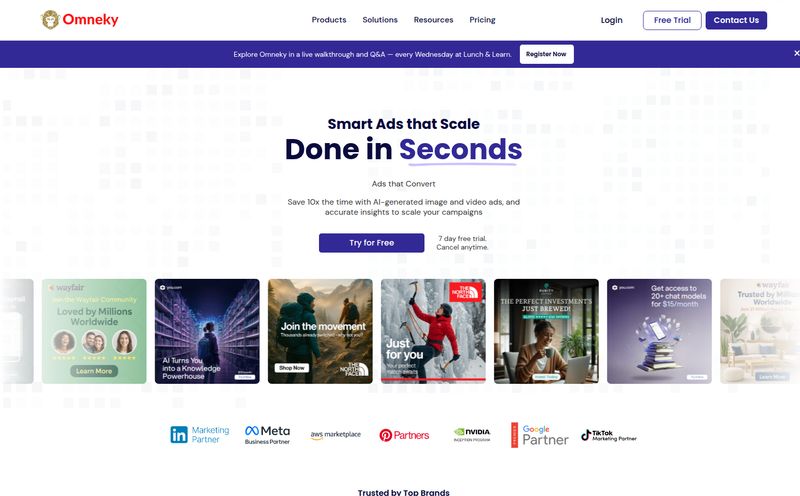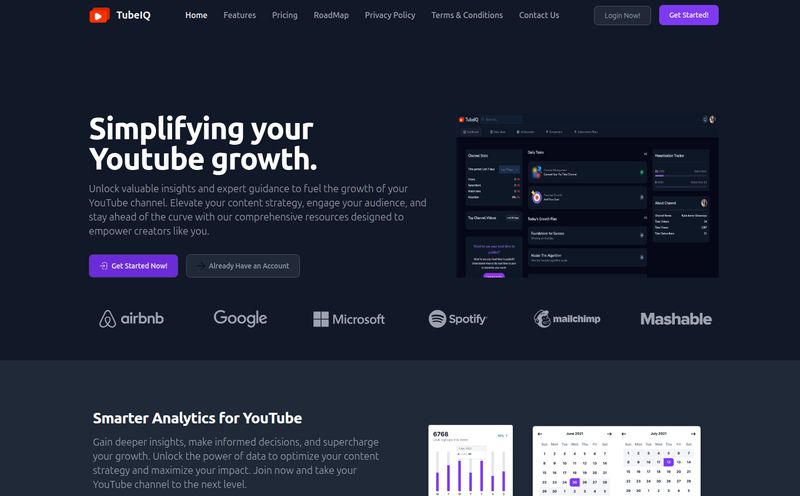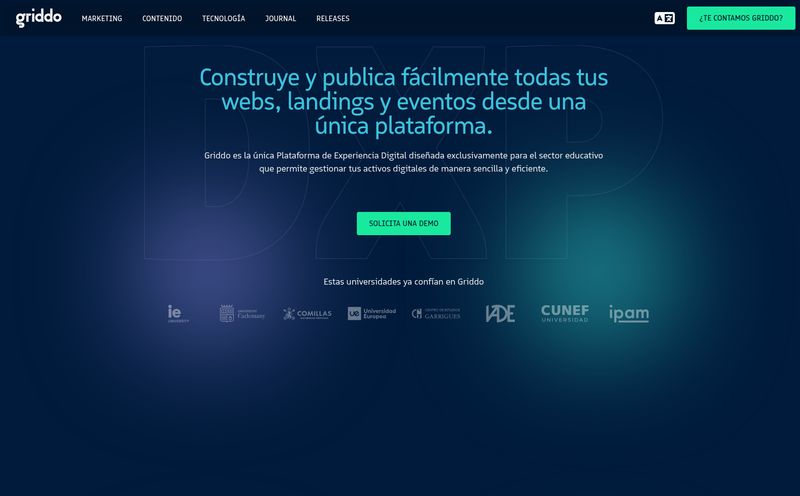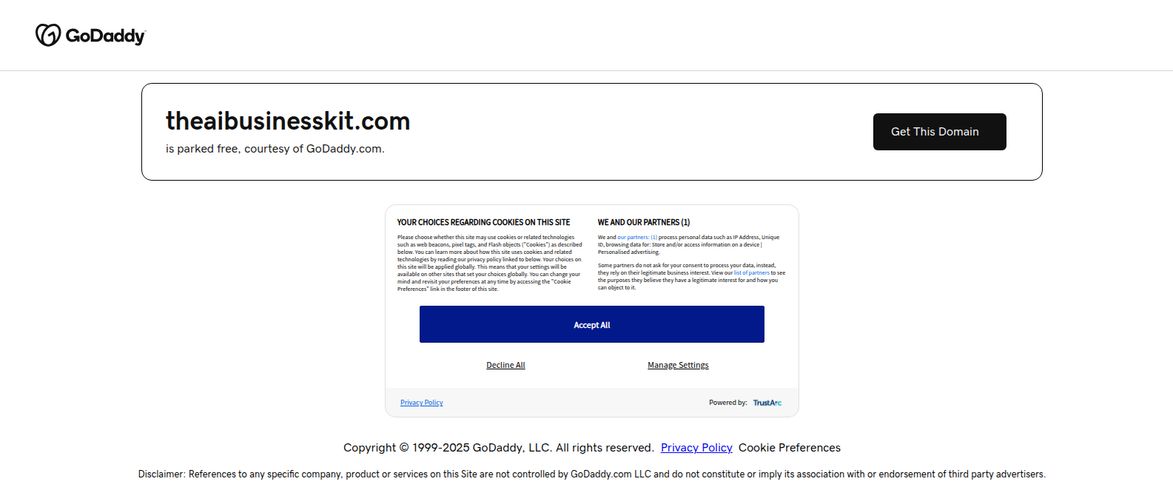For years, the world of conversion rate optimization (CRO) has felt a bit…clunky. You’ve got a great idea for a new headline. You think a green button will crush the current blue one. So you fire up a testing tool, spend half a day wrestling with code injectors or a visual editor that feels like it was designed in 2007, and wait. And wait. And then maybe you get some data. Maybe.
Ever since Google sunsetted its free Optimize tool, a lot of us in the SEO and marketing trenches have been looking for what’s next. We’ve been searching for something that’s not just a replacement, but an actual step up. Something smarter, faster, and more integrated into the platforms we already love.
So when Webflow announced Webflow Optimize, my ears perked up. For those who don't know, it's the evolution of a tool called Intellimize, which was already a pretty serious player in the enterprise space. Now, it's baked right into the Webflow ecosystem. But is it any good? I’ve been digging in, and honestly, there's a lot to talk about.
So, What Is Webflow Optimize Anyway?
Forget the corporate jargon for a second. At its heart, Webflow Optimize is a tool designed to stop you from guessing. It’s a platform for running experiments on your website to figure out what actually convinces visitors to click, sign up, or buy. Simple as that.
It does this through three main pillars: A/B testing, personalization, and a layer of AI that, frankly, is the most interesting part. You can test different versions of a page (the classic A/B test), show specific content to different groups of people (like showing a special offer to visitors from a specific ad campaign), and let an algorithm figure out the winning combinations for you. It’s a CRO toolkit, but it feels distinctly more modern.
The Core Features That Actually Matter
Okay, let's get into the guts of the thing. A features list is just a list until you know how it actually helps you.
Running A/B Tests Without the Headache
This is the bread and butter. You have a hypothesis—'a stronger call-to-action will increase demo requests'—and Optimize lets you test it. What feels different here is the integration. Because it's part of Webflow, setting up these tests feels less like a messy science project and more like a natural part of your workflow. You can test a single element or test a whole bunch of changes at once (what we nerds call multivariate testing). The goal is to get you from idea to live experiment quickly, without needing to call in a developer for every little tweak.
Personalization That Isn't Creepy
Personalization is one of those words that gets thrown around a lot. Often, it just means sticking someone's first name in an email. Webflow Optimize aims for something a bit deeper. It lets you create different site experiences for different audiences. Think about it: a first-time visitor from an organic search has a totally different mindset than a returning lead from your Account-Based Marketing (ABM) list. Optimize allows you to cater to them. You can show the new visitor your main value proposition, while showing the returning lead a specific case study relevant to their industry. It’s like your website is a smart chameleon, adapting its colors to whoever is looking at it.
The AI-Powered Secret Sauce
Now for the cool part. I'm always skeptical of the term “AI,” which marketers have slapped onto everything from toasters to socks. But here, it seems to have some real teeth. Instead of a traditional A/B test where you have to send 50% of your traffic to Version A and 50% to Version B until you reach statistical significance, Webflow Optimize's AI gets to work faster. It starts learning which variations are performing better and begins sending more traffic to the winners, even before the test is officially 'done'. This means you're not losing as many potential conversions on a dud version of your page. It's designed to find winning ideas faster and maximize your results while the experiment is still running. That’s a pretty big deal.
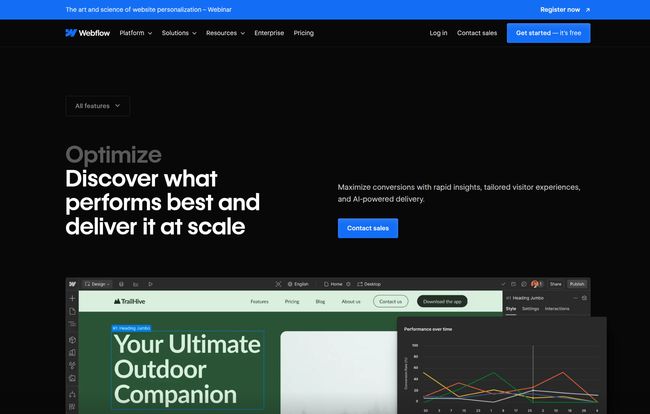
Visit Webflow Optimize
The Good, The Bad, and The Pricey
No tool is perfect. Let's get down to brass tacks. I’ve found that the best way to evaluate any platform is to be brutally honest about its highs and its lows.
What I Really Like About It
First off, the ease of use is a genuine highlight. For teams already embedded in the Webflow universe, it just fits. The learning curve is surprisingly gentle for such a powerful tool. The AI-optimization is more than a gimmick; for high-traffic sites, the ability to find winners faster and dynamically shift traffic is a massive advantage. But the thing I keep coming back to is its privacy stance. Webflow Optimize does not use cookies to track visitors. In a world that's rapidly turning against third-party cookies, this is huge. It shows they're building for the future of the web, not the past. It respects visitor privacy while still giving you powerful insights. That’s a tricky balance, and they seem to have threaded that needle well.
Some Things to Keep in Mind
Okay, it’s not all sunshine and rainbows. That usage-based pricing model can be a double-edged sword. If you're running a ton of experiments on a high-traffic site, the costs could climb. You need to be aware of that going in. This isn’t a casual tool for a hobby blog. It's a professional suite, and it has a professional price tag. Also, while the core platform itself is cookie-less, it's on you to be responsible with your other integrations. If you connect Optimize to a third-party CRM or data tool that does identify individual visitors, you're re-introducing those privacy considerations. It's just something to be mindful of in your overall marketing stack.
Let's Talk Money: Webflow Optimize Pricing
So what's this actually going to cost you? The pricing structure is pretty straightforward, which I appreciate. There are two main tiers.
| Plan | Price | Best For |
|---|---|---|
| Optimize | Starts at $299 / month | Individuals and small teams getting started with CRO. Allows for up to 5 concurrent optimizations. |
| Optimize Enterprise | Contact for quote | Larger businesses looking to scale their optimization programs with unlimited concurrent tests. |
As you can see, the entry point of $299 per month firmly places this in the premium category. It's an investment, and you should have a clear strategy for how you'll generate a return on it.
Who Is This Really For?
After playing around and looking at the features and pricing, I've got a pretty clear idea of the ideal user. Webflow Optimize is probably not for the solo blogger or the small business just dipping a toe into web design.
This tool is built for established businesses, especially those already using Webflow Enterprise. It’s for marketing teams who are past the point of making changes based on gut feelings and are ready to embrace a data-driven culture. It's for agencies managing a portfolio of serious client websites where improving conversion rates by even a few percentage points means serious revenue. If you have the traffic and the budget to make continuous optimization a core part of your strategy, then Optimize could be a fantastic fit.
Final Thoughts
Webflow Optimize is an impressive piece of kit. It’s a powerful, intelligent, and thoughtfully designed platform that addresses a real need in the market, especially with the void left by other tools. It takes the often-intimidating world of CRO and makes it more accessible, particularly for Webflow users.
Is it the answer for everyone? No. The price point makes it a considered purchase. But for the right company, it could easily be a game-changer. It represents a shift towards more integrated, AI-enhanced, and privacy-conscious tools. And in my book, that’s a very good direction for all of us.
Frequently Asked Questions
- 1. What is Webflow Optimize in a nutshell?
- It's a website optimization platform built for Webflow that lets you run A/B tests, personalize content for different visitors, and use AI to improve your site's conversion rates faster.
- 2. Does Webflow Optimize use cookies?
- No, the core platform is cookie-less. It uses other methods to differentiate visitors for testing, which is a major plus for visitor privacy and future-proofing against browser changes.
- 3. How is it different from the old Google Optimize?
- While both are for A/B testing, Webflow Optimize is more tightly integrated into the Webflow platform, offers more advanced AI-powered traffic allocation to find winners faster, and has robust personalization features aimed at B2B and enterprise users.
- 4. Can I use Webflow Optimize if my site isn't on Webflow?
- Webflow Optimize is designed to work seamlessly within the Webflow ecosystem, particularly with Webflow Enterprise. While its predecessor, Intellimize, was platform-agnostic, the current product is positioned as a native part of the Webflow experience.
- 5. Is Webflow Optimize worth the $299/mo starting price?
- It depends on your business. If you have significant website traffic and a small improvement in your conversion rate translates to thousands of dollars in revenue, then yes, it can provide a strong ROI. For smaller sites or businesses without a dedicated testing budget, it might be too steep.
- 6. Can I test more than just two versions of a page?
- Absolutely. You can test multiple variables at once (multivariate testing), allowing the AI to mix and match elements like headlines, images, and calls-to-action to find the best possible combination.
